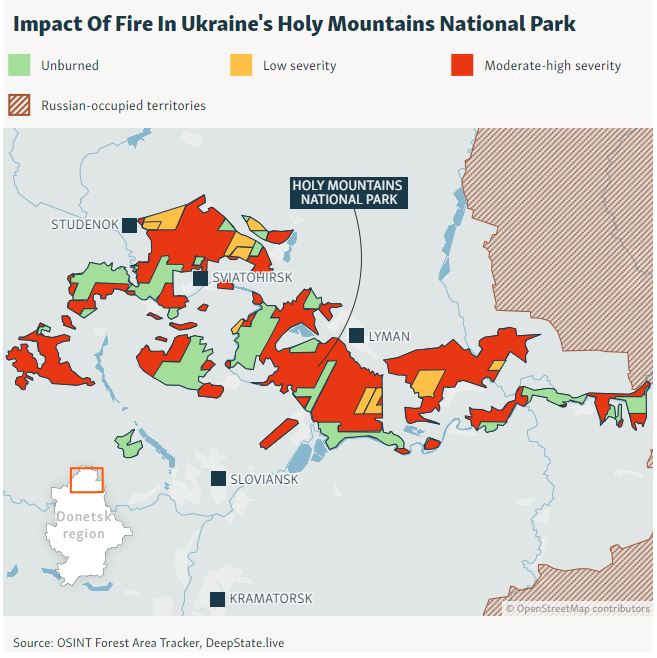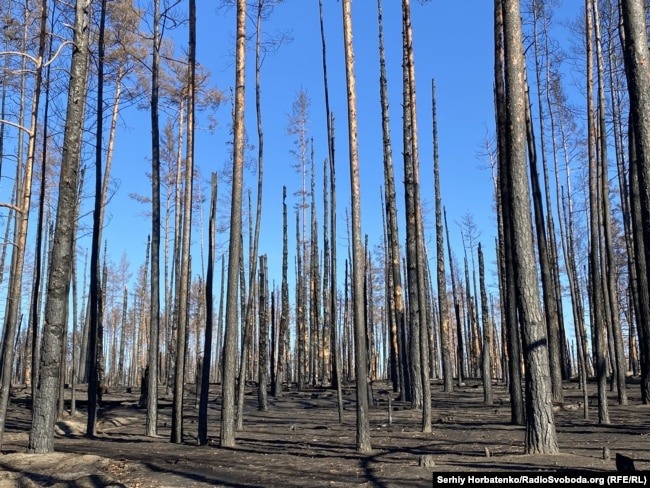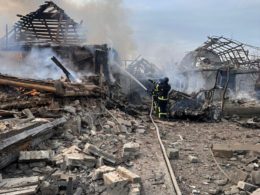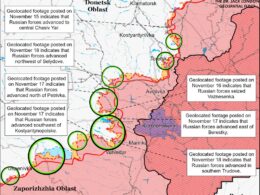The ongoing Russian invasion has transformed the Holy Mountains national park in eastern Ukraine’s Donetsk Oblast into a landscape of destruction, charred forests, and potential long-term ecological devastation, RFE/RL reports.
Holy Mountains National Nature Park is located along the chalk cliffs and river terraces of the Donets River in eastern Ukraine. The park encompasses a patchwork of forested areas along the riverbanks and includes archaeological, natural, historical, and recreational sites, such as the Sviatohirsk Lavra monastery.
The Environment Ministry estimates damage to the natural reserve at more than 16 billion UAH ($385 million), with the full extent of destruction still unknown. According to Deputy Environment Minister Olena Kramarenko, almost 3 million hectares of forest – an area three-quarters the size of Switzerland – have been affected by hostilities.

Since Russia’s full-scale invasion began, the amount of Ukrainian forest destroyed by fire has increased by a factor of 30, according to the All-Ukrainian Ecology League. The park, located in a northern section of Donetsk Oblast, has been particularly hard-hit, with Russian troops initially capturing the area and Ukrainian forces recapturing it in September 2022.
A massive wildfire, triggered by a Russian air strike, burned 7,000 hectares of the park and destroyed local homes, including that of 64-year-old former teacher Lydia Prokopenko.
“The fire spread so quickly. Such huge balls of fire were flying through the air…that our house couldn’t be saved,” Prokopenko told RFE/RL.
Ecological experts warn of severe, long-lasting consequences. Volodymyr Yarotskyi, an ecologist, described the environmental impact as significant, noting the disappearance of wildlife like bats and the disruption of entire ecosystem cycles.
The park’s recovery appears challenging. Oleksii Prykhodko from the Lyman Forestry state enterprise estimates it could take 50-70 years to restore forests to their pre-war condition. Moreover, demining efforts have cleared only 2% of the park, with full demining potentially taking a decade or more.
Related:
- ISW: Russia advances in western Donetsk Oblast; gains remain tactical, lack immediate operational significance
- Russian pollution causes massive fish die-off in Ukraine’s Seym and Desna rivers
- Russian forces devastate Ukraine’s Askania-Nova national park, relocate animals
- Ukrainian scientists race to document soil fungi amid ongoing war
- Russo-Ukrainian War, day 894: F-16s boost Ukraine’s air defense, but limited numbers may hinder success
- Russia’s war destroys 80 % of Ukrainian “Holy Mountains” National Park in Donetsk Oblast
- Russia destroys over 60,000 hectares of Ukrainian forests worth over $ 360 mn – investigation
- Ukraine recorded over 265 Russian environmental crimes, including 14 cases of ecocide






